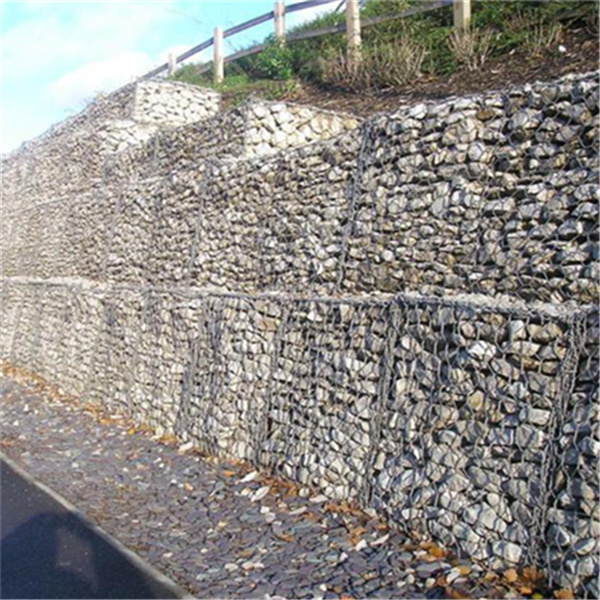دېكابىر . 12, 2024 00:02 Back to list
Exploring Standard Gabion Sizes from Leading Manufacturers for Your Construction Needs
Understanding Standard Gabion Sizes from Manufacturers
Gabions, which are wire mesh containers filled with rock, concrete, or recycled materials, have proven to be versatile solutions for various construction and landscaping applications. Their structure provides not only strength and durability but also aesthetic appeal, making them popular for erosion control, retaining walls, and decorative elements in gardens. One of the critical considerations when using gabions is their size, as standard gabion dimensions can vary significantly depending on the manufacturer and intended use.
What Are Gabions?
Gabions originated from military engineering, where they were used to create defensive structures. Today, they are widely employed in civil engineering, environmental management, and architecture. They are particularly effective for stabilizing slopes, controlling erosion, and creating barriers that withstand environmental stress. Gabions also facilitate drainage, reduce runoff, and create habitats for wildlife.
Standard Gabion Sizes
The standard sizes of gabions are typically determined by their application and the type of material they contain. Manufacturers provide a range of products, but some common dimensions include
1. 3x3x3 Feet (1x1x1 Meter) These smaller gabions are often used for landscaping projects, such as garden borders or small retaining walls. They are easy to handle and can be manipulated into various shapes.
2. 4x4x4 Feet (1.2x1.2x1.2 Meters) This size is frequently used for moderate retaining walls and erosion control applications. They provide a bigger volume while remaining manageable.
3. 6x3x3 Feet (2x1x1 Meter) This size is common for larger retaining walls and is beneficial for projects requiring more substantial structural support due to its increased height.
4. 8x2x2 Feet (2.4x0.6x0.6 Meters) These gabions are ideal for creating robust barriers and are often employed in riverbank reinforcement projects.
standard gabion sizes manufacturers

5. Custom Sizes Many manufacturers offer customizable options to meet specific project needs. This flexibility allows for the creation of gabions tailored to unique landscapes or structural requirements.
Factors to Consider When Choosing Gabion Sizes
When selecting gabion sizes, several critical factors must be considered
- Project Purpose The intended use of the gabion will largely dictate the size requirements. For example, a decorative feature may benefit from smaller, visually appealing sizes, while structural applications may necessitate larger units for improved stability.
- Site Conditions Local geography, soil conditions, and potential water flow can influence the size of gabions suitable for your project. Consult with an engineer to assess these factors.
- Load Considerations The anticipated load on the gabion walls—whether it's soil, water, or additional structures—will influence the size and reinforcement needs.
- Material and Fill Type The weight and bulk of the material used to fill the gabions (stone, concrete, or soil) may also dictate size selection. Heavier materials may require larger cages to ensure structural integrity.
Conclusion
Standard gabion sizes from manufacturers play a crucial role in the effectiveness and application of these adaptable structures. By understanding the specifications and potential uses of different sizes, builders and landscapers can make informed decisions that optimize functionality, aesthetics, and durability. Whether you require standard dimensions or need custom solutions, the versatility of gabions makes them an excellent choice for various landscaping and engineering projects. Always consult with a professional to ensure that your choices align with best practices in design and construction.
-
Why PVC Coated Gabion Mattress Is the Best Solution for Long-Term Erosion Control
NewsMay.23,2025
-
Gabion Wire Mesh: The Reinforced Solution for Modern Construction and Landscape Design
NewsMay.23,2025
-
Gabion Wall: The Flexible, Seismic-Resistant Solution for Modern Landscaping and Construction
NewsMay.23,2025
-
Gabion Wall Solutions: The Durable, Decorative, and Affordable Choice for Every Landscape
NewsMay.23,2025
-
Gabion Basket: The Durable and Flexible Alternative to Traditional Retaining Walls
NewsMay.23,2025
-
Gabion Basket: The Proven Solution for Slope Stability and Flood Control
NewsMay.23,2025
-
Versatility of Chain Link Fence Gabion
NewsMay.13,2025






